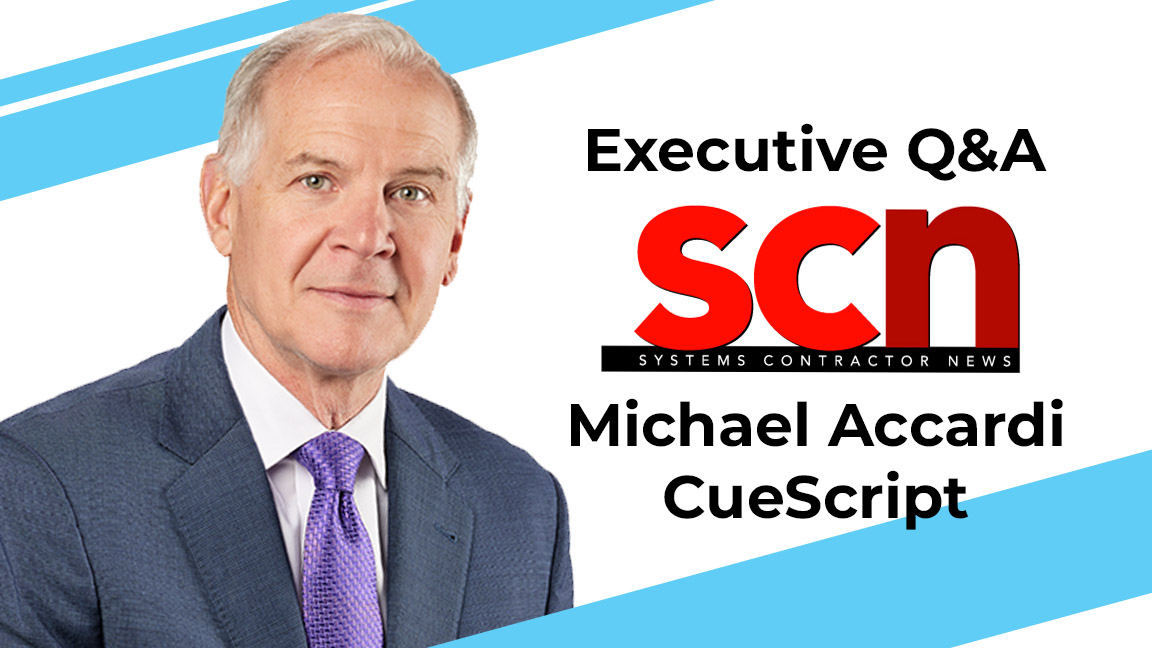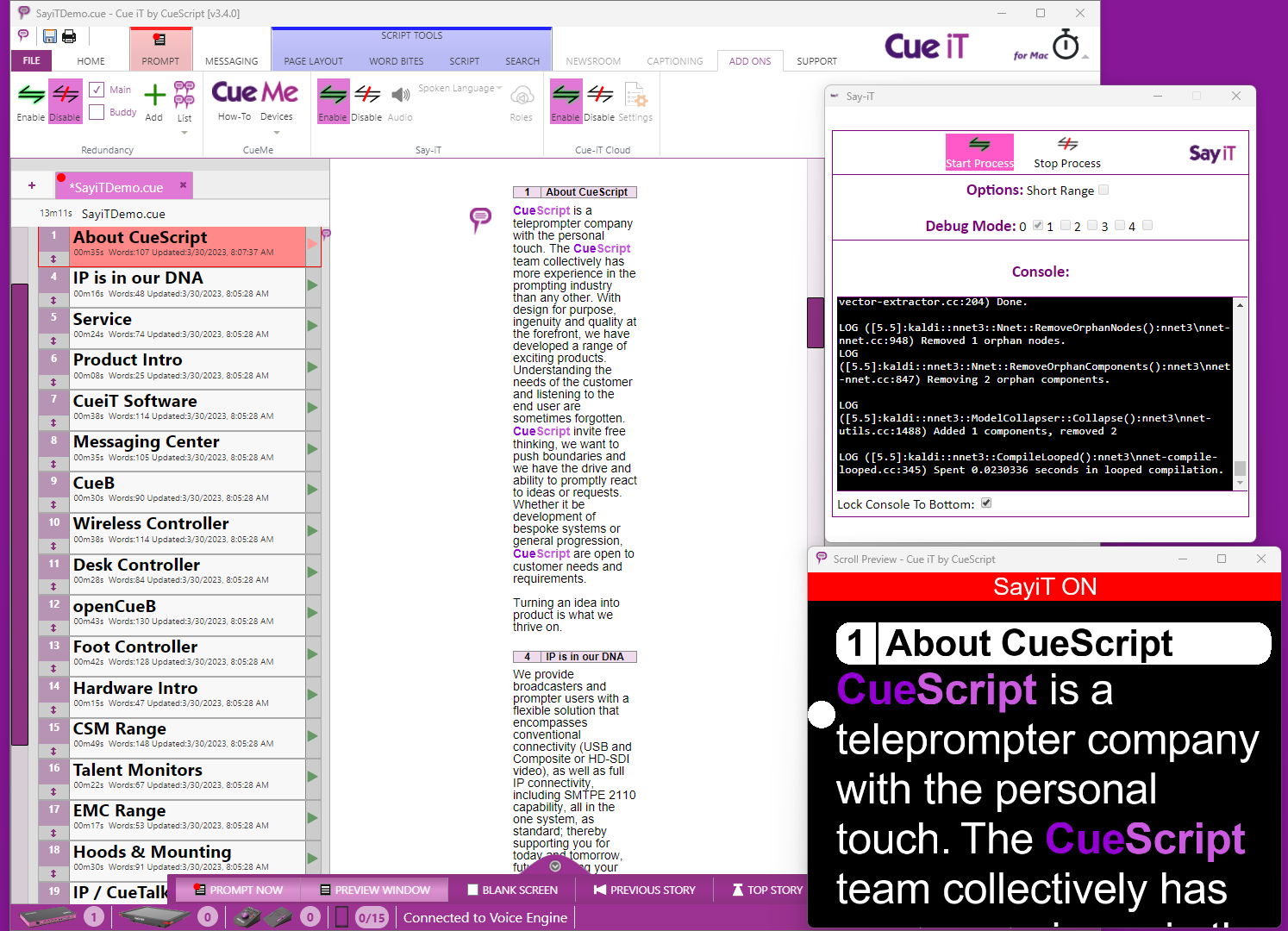
SCN: What (forgive me) prompted you to create CueScript?
Michael Accardi: We watched the small company we came from become part of a large organization and lose the DNA that made it successful and fun. We found ourselves losing contact with our customers and losing control of our products and services. Worst of all, we felt powerless to serve our customers and treat the staff the way we felt they deserved. So, we made the decision to start a new company that would fill the void.
We still think of ourselves as the new guys that do things the old-fashioned way ... with a personal touch.
[Executive Q&A: Content Creation for Everyone]
SCN: How is CueScript celebrating its 10th anniversary?

MA: We were at NAB 2024 for our actual anniversary—we literally launched CueScript 10 years ago on the LVCC floor. CueScript has been a most humbling experience. It’s true, we are celebrating a decade in business, but every single day, not just now, we are very aware that we got here. We are grateful to our many loyal customers who come back to us year after year, and we could never have anticipated the level of support we have received from both our customers and partners. We are sincerely grateful to be in such a supportive industry.
We’re dedicated to providing the best service, products, and technology in the prompting business. And most importantly, we have a truly exceptional team comprised of people dedicated to keeping our customers happy and successful first—and the company happy and successful next.
On a very personal CueScript note: We recently lost Brian Larter. Brian and I were co-founders. It has been hard to celebrate our success and 10th year anniversary without Brian. We think of him every day and always will.
SCN: With so many choices for prompting solutions, what makes CueScript unique in the market?
MA: So much! First and foremost, our passion for exceptional service and support. We are 100% dedicated to providing the highest level of service possible. We know a technical glitch can result in a disastrous broadcast. So, a CueScript team member will be available to solve any issues 24/7.
Then there’s our technology. We are constantly in touch with our customers and developing "world’s first" and "unique in the industry" products to suit every individual need. Some of the products that set CueScript apart from the competition include CueiT, the industry’s first complete IP-based prompting solution that also offers conventional connectivity. Our end to end SMPTE 2110 workflow and CueTALK Cloud, the first and only service of its kind in the world of prompters, connects prompting anywhere, anytime with a user-friendly, seamless, and quick setup between local and remote applications using a standard public Internet connection. More on all these products later. Those are just the highlights.

SCN: What are some of CueScript’s top vertical markets for sales these days?
MA: We service a vast range of markets including houses of worship, education, corporate, government, entertainment venues, sports arenas, news, and of course broadcasting productions—basically any market that requires talent or a spokesperson to access a script.
SCN: Generally speaking, are integrators more interested in speech prompters or video production prompters?
[Get Excited About These New PTZs in 2024]
MA: The application drives the decision regarding speech prompter versus production on-camera units. If the presenter is looking into a lens to reach the viewer at home, we use on-camera units. If the talent is presenting to an audience, speech prompters are appropriate. The goal is always the same: to make the presenter connect with the chosen audience and to keep the presenter at ease.
SCN: In a 16:9 world, why are your prompters built around 4:3 screens?
MA: Bigger is better, and you get bigger letters with 4:3 prompters. In addition, 16:9 is actually too wide. You can watch the talents’ eyes move from left to right.
SCN: What do potential customers often misunderstand about prompters?
MA: No one realizes the importance of prompters until there is a problem. This is an on-air critical system. We literally are the one and only interface to the talent as they present to viewers at home. Not only does a prompter need to work the first time and every time, but it needs to instill confidence and provide a comfort factor to the talent. They cannot be worrying about the prompter.
You also need to be practical and understand that nothing is perfect. At CueScript, we get it. If you call in for support, our first question is “Is this an on-air emergency?” not “Is your support contract current?”
SCN: How is the new CueFlip different from other field prompters?
MA: CueFlip is a smart folding field prompter and talent monitor in a truly unique form factor that eliminates breakage concerns when transporting systems. CueFlip screens fold face-to-face securely, so there is no worry about outward facing displays being damaged. It’s easy-to-assemble design enables fast field setup with the highest NIT prompter screens on the market.
[Viewpoint: Evaluating the Office Space Identity Crisis]
SCN: You’ve also got CueTALK Cloud. Why would anyone need a cloud-based prompting solution?
MA: Simply put, it’s easy to use, leverages the public Internet to connect remote productions, and is available as a subscription for cost-savings.
CueTALK Cloud is the first and only service of its kind in the world of prompters. It connects prompting anywhere, anytime. It can be setup between local and remote applications quickly and easily using a standard public Internet connection. CueTALK Cloud maximizes flexibility and scalability by allowing users to adapt to changing production needs effortlessly and enabling collaboration between remote sites in real-time. CueTALK Cloud subscription plans are designed to meet any range of requirements.

SCN: You mentioned SayiT when we talked at NAB. Are you telling me prompters are using AI now?
MA: SayiT is our voice activated prompting software that streamlines the prompting experience by automatically scrolling speech with text in perfect synchronization, eliminating the need for manual scrolling and ensuring a seamless presentation. Operators can focus on other essential aspects of production, saving time, reducing errors, and enjoying overall efficiency.







